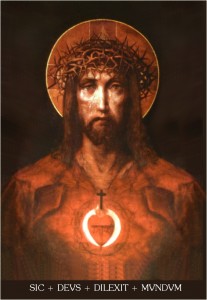 A friend who is a spiritual seeker recently asked, “Why are there so few non-religious documents to support the existence of Jesus?”
A friend who is a spiritual seeker recently asked, “Why are there so few non-religious documents to support the existence of Jesus?”
In fact, there are numerous references to Jesus in ancient documents. Amazingly, we can actually authenticate dozens of specific facts about his life and teachings – even from non-Christian, non-New Testament sources. Let’s take a look at just one of these ancient sources – Tacitus.
The following is excerpted from The Historical Jesus, an excellent resource (although it appears to be currently out of print) written by a former professor of mine, and a leading expert on the Resurrection of Jesus, Dr. Gary Habermas:
Cornelius Tacitus (ca. 55 120 A.D.) was a Roman historian who lived through the reigns of over a half dozen Roman emperors. He has been called the “greatest historian” of ancient Rome, an individual generally acknowledged among scholars for his moral “integrity and essential goodness.”
Tacitus is best known for two works — the Annals and the Histories. The former is thought to have included eighteen books and the latter to have included twelve, for a total of thirty. The Annals cover the period from Augustus’ death in 14 A.D. to that of Nero in 68 A.D., while the Histories begin after Nero’s death and proceed to that of Domitian in 96 A.D.
Tacitus recorded at least one reference to Christ and two to early Christianity, one in each of his major works. The most important one is that found in the Annals, written about 115 A.D. The following was recounted concerning the great fire in Rome during the reign of Nero:
“Consequently, to get rid of the report, Nero fastened the guilt and inflicted the most exquisite tortures on a class hated for their abominations, called Christians by the populace. Christus, from whom the name had its origin, suffered the extreme penalty during the reign of Tiberius at the hands of one of our procurators, Pontius Pilatus, and a most mischievous superstition, thus checked for the moment, again broke out not only in Judaea, the first source of the evil, but even in Rome, where all things hideous and shameful from every part of the world find their centre and become popular. Accordingly, an arrest was first made of all who pleaded guilty; then, upon their information, an immense multitude was convicted, not so much of the crime of firing the city, as of hatred against mankind. Mockery of every sort was added to their deaths. Covered with the skins of beasts, they were torn by dogs and perished, or were nailed to crosses, or were doomed to the flames and burnt, to serve as a nightly illumination, when daylight had expired.
“Nero offered his gardens for the spectacle, and was exhibiting a show in the circus, while he mingled with the people in the dress of a charioteer or stood aloft on a car. Hence, even for criminals who deserved extreme and exemplary punishment, there arose a feeling of compassion; for it was not, as it seemed, for the public good, but to glut one man’s cruelty, that they were being destroyed.”
From this report we can learn several facts, both explicit and implicit, concerning
Christ and the Christians who lived in Rome in the 60s A.D. Chronologically, we may ascertain the following information.
(1) Christians were named for their founder, Christus (from the Latin), (2) who was put to death by the Roman procurator Pontius Pilatus (also Latin), (3) during the reign of emperor Tiberius (14 37 A.D.). (4) His death ended the “superstition” for a short time, (5) but it broke out again, (6) especially in Judaea, where the teaching had its origin.
(7) His followers carried his doctrine to Rome. (8) When the great fire destroyed a large part of the city during the reign of Nero (54 68 A.D.), the emperor placed the blame on the Christians who lived in Rome. (9) Tacitus reports that this group was hated for their abominations. (10) These Christians were arrested after pleading guilty, (11) and many were convicted for “hatred for mankind.” (12) They were mocked and (13) then tortured, including being “nailed to crosses” or burnt to death. (14) Because of these actions, the people had compassion on the Christians. (15) Tacitus therefore concluded that such punishments were not for the public good but were simply “to glut one man’s cruelty.”
Several facts here are of interest. As F. F. Bruce has noted, Tacitus had to receive his information from some source and this may have been an official record. It may even have been contained in one of Pilate’s reports to the emperor, to which Tacitus would probably have had access because of his standing with the government. Of course, we cannot be sure at this point, but a couple of early writers do claim to know the contents of such a report…Also of interest is the historical context for Jesus’ death, as he is linked with both Pilate and Tiberius. Additionally, J. N. D. Anderson sees implications in Tacitus’ quote concerning Jesus’ resurrection:
“It is scarcely fanciful to suggest that when he adds that “A most mischievous superstition, thus checked for the moment, again broke out” he is bearing indirect and unconscious testimony to the conviction of the early church that the Christ who had been crucified had risen from the grave.”
Also interesting is the mode of torture employed against the early Christians. Besides burning, a number were crucified by being “nailed to crosses.” Not only is this the method used with Jesus, but tradition reports that Nero was responsible for crucifying Peter as well, but upside down. The compassion aroused in the Roman people is also noteworthy.
– Habermas, The Historical Jesus, pp. 187-190
 Today’s Old Testament Mass reading from Genesis features the famous building of the tower of Babel in an attempt to reach heaven by human power. God stops them by confusing their language, scattering them to the ends of the earth (Genesis 11:8-9).
Today’s Old Testament Mass reading from Genesis features the famous building of the tower of Babel in an attempt to reach heaven by human power. God stops them by confusing their language, scattering them to the ends of the earth (Genesis 11:8-9).







 The new movie, The Rite, #1 at the North American box office this past weekend, once again reveals Hollywood’s fascination with exorcism. 1973’s The Exorcist began this trend in earnest, with 2005’s The Exorcism of Emily Rose a more recent example. All three movies are at least in part based on actual cases.
The new movie, The Rite, #1 at the North American box office this past weekend, once again reveals Hollywood’s fascination with exorcism. 1973’s The Exorcist began this trend in earnest, with 2005’s The Exorcism of Emily Rose a more recent example. All three movies are at least in part based on actual cases. On a day when U.S. President Barack Obama gave the “State of the Union” address, it’s apropos that today is the feast marking the conversion of Saint Paul. This, in turn, denotes the close of the Week of Prayer for Christian Unity. And without true conversion, Christian unity will always be relegated to fantasy status. It seems that many Christians have either a) given up on the concept completely, or b) have a skewed vision of what true Christian unity looks like.
On a day when U.S. President Barack Obama gave the “State of the Union” address, it’s apropos that today is the feast marking the conversion of Saint Paul. This, in turn, denotes the close of the Week of Prayer for Christian Unity. And without true conversion, Christian unity will always be relegated to fantasy status. It seems that many Christians have either a) given up on the concept completely, or b) have a skewed vision of what true Christian unity looks like. A friend who is a spiritual seeker recently asked, “Why are there so few non-religious documents to support the existence of Jesus?”
A friend who is a spiritual seeker recently asked, “Why are there so few non-religious documents to support the existence of Jesus?”